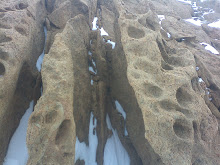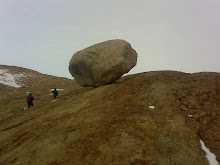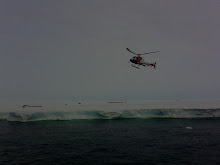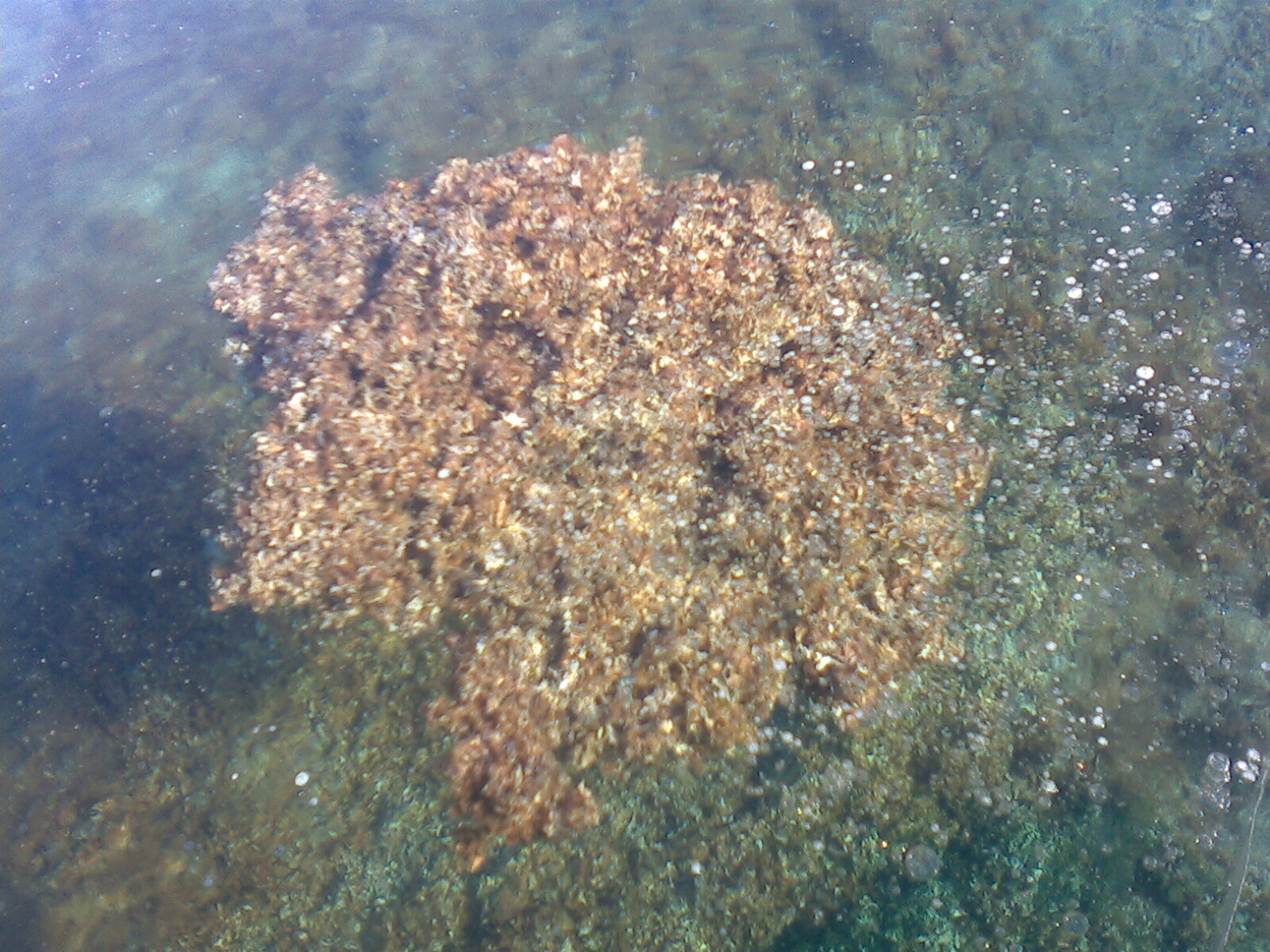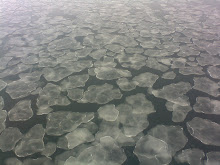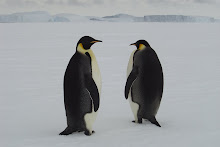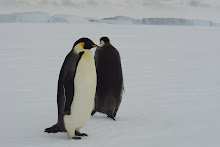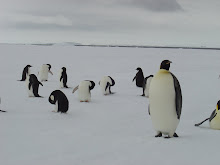By Khwairakpam Gajananda (PhD)
DEFINITION OF INDIGENOUS PEOPLES:
`Indigenous peoples are those which having a historical continuity with pre-invasion and pre-colonial societies that developed on their territories, consider themselves distinct from other sectors of societies now prevailing in those territories, or parts of them. They form at present non-dominant sectors of society and are determined to preserve, develop, and transmit to future generations their ancestral territories, and their ethnic identity, as the basis of their continued existence as peoples, in accordance with their own cultural patterns, social institutions and legal systems`, according to Martinez-Cobo, 1984, the United Nations Special Rapporteur to the Sub-Commission on Prevention of Discrimination and Protection of Minorities, Indigenous Communities, Peoples and Nations.
INTRODUCTION:
The indigenous peoples of the world is very diverse and is about 400 million with close to 5000 distinct tribes, which symbolize and nurture 80% of the world`™s cultural and biological diversity`”occupying 20% of the world`™s land surface. Indigenous Peoples play key roles in preserving land, environment, ecology, protecting language, promoting and preserving culture and tradition. Many of the World`™s Indigenous Peoples have already adapted to the paradigm shift and are adjusting to the technological and political changes. By respecting the nature, Indigenous Peoples are champions to the sustainable conservations of the environment.
Despite such extensive diversity in indigenous communities throughout the world, all Indigenous Peoples have one thing in common`”they all share a history of injustice. Indigenous Peoples have been killed, tortured and enslaved in all the livable continents. Many of them are the victims of genocide and are denied the rights to participate in governing processes of the political systems. The fundamental rights of self-determination, dignity and identity of indigenous peoples were stolen during the conquest and colonization.
The rights of Indigenous Peoples overlap with many other human rights; however, the important parts are not framed specifically but are part of more general treaties, like the Universal Declaration of Human Rights or the Convention on the Prevention and Punishment of the Crime of Genocide.
UNITED NATIONS (UN) DECLARATIONS AND CONVENTIONS:
(1) The Durban Declaration and Programme of Action (2001)
The Durban Declaration and Programme of Action (2001) for the first time recommended the UN to use the phrase `Indigenous Peoples` in all the documents rather than using the phrase `Indigenous People`. This carries a clear message to the World`™s populations that the `Indigenous Peoples`™ is not singular but plural!
(2) The UN Declaration on the Rights of Indigenous Peoples, March 2008
This declaration is the most comprehensive statement of the rights of Indigenous Peoples to date, establishing collective rights to a greater extent than any other document in international human rights law. It establishes the rights of Indigenous Peoples to the protection of their cultural property and identity as well as the rights to education, employment, health, religion, language and more. It also protects the right of Indigenous Peoples to own land collectively. Although, States are not legally bound by the Declaration, it exerted a considerable amount of moral force by the General Assembly. Consisting of 46 Articles, the draft Declaration is divided into nine parts. Some of the Articles of the Declarations are reproduced as follows:
Article 1:- Indigenous peoples have the right to the full enjoyment, as a collective or as individuals, of all human rights and fundamental freedoms as recognized in the Charter of the UN, the Universal Declaration of Human Rights and international human rights law.
Article 5:- Indigenous peoples have the right to maintain and strengthen their distinct political, legal, economic, social and cultural institutions, while retaining their right to participate fully, if they so choose, in the political, economic, social and cultural life of the State.
Article 6:- Every indigenous individual has the right to a nationality.
Article 8:- 1. Indigenous peoples and individuals have the right not to be subjected to forced assimilation or destruction of their culture. 2. States shall provide effective mechanisms for prevention of, and redress for: (a) Any action which has the aim or effect of depriving them of their integrity as distinct peoples, or of their cultural values or ethnic identities; (b) Any action which has the aim or effect of dispossessing them of their lands, territories or resources; (c) Any form of forced population transfer, which has the aim or effect of violating or undermining any of their rights; (d) Any form of forced assimilation or integration; (e) Any form of propaganda designed to promote or incite racial or ethnic discrimination directed against them.
Article 13:- 1. Indigenous peoples have the right to revitalize, use, develop and transmit to future generations their histories, languages, oral traditions, philosophies, writing systems and literatures, and to designate and retain their own names for communities, places and persons. 2. States shall take effective measures to ensure that this right is protected and also to ensure that indigenous peoples can understand and be understood in political, legal and administrative proceedings, where necessary through the provision of interpretation or by other appropriate means.
Article 27:- States shall establish and implement, in conjunction with indigenous peoples concerned, a fair, independent, impartial, open and transparent process, giving due recognition to indigenous peoples`™ laws, traditions, customs and land tenure systems, to recognize and adjudicate the rights of indigenous peoples pertaining to their lands, territories and resources, including those which were traditionally owned or otherwise occupied or used. Indigenous peoples shall have the right to participate in this process.
Article 30:- 1. Military activities shall not take place in the lands or territories of indigenous peoples, unless justified by a relevant public interest or otherwise freely agreed with or requested by the indigenous peoples concerned. 2. States shall undertake effective consultations with the indigenous peoples concerned, through appropriate procedures and in particular through their representative institutions, prior to using their lands or territories for military activities.
Article 31:- 1. Indigenous peoples have the right to maintain, control, protect and develop their cultural heritage, traditional knowledge and traditional cultural expressions, as well as the manifestations of their sciences, technologies and cultures, including human and genetic resources, seeds, medicines, knowledge of the properties of fauna and flora, oral traditions, literatures, designs, sports and traditional games and visual and performing arts. They also have the right to maintain, control, protect and develop their intellectual property over such cultural heritage, traditional knowledge, and traditional cultural expressions. 2. In conjunction with indigenous peoples, States shall take effective measures to recognize and protect the exercise of these rights.
Article 36:- 1. Indigenous peoples, in particular those divided by international borders, have the right to maintain and develop contacts, relations and cooperation, including activities for spiritual, cultural, political, economic and social purposes, with their own members as well as other peoples across borders. 2. States, in consultation and cooperation with indigenous peoples, shall take effective measures to facilitate the exercise and ensure the implementation of this right.
(3) The Earth Summit, Rio de Janeiro, Brazil 1992
The Earth Summit in Rio de Janeiro, Brazil 1992 recognized the special relationship between Indigenous Peoples and their lands. Indigenous Peoples have a vital role in environmental management and development because of their traditional knowledge and practice. In order to fully make use of that knowledge, some Indigenous Peoples need greater control over their land, self-management of their resources and participation in development decisions affecting them (Agenda 21, Chapter 26.4). The Convention on Biological Diversity (1992), thus called upon its signatories to `respect, preserve and maintain knowledge, innovations and practices of indigenous and local communities embodying traditional lifestyles relevant for the conservation and sustainable use of biological diversity and promote their wider application with the approval and involvement of the holders of such knowledge, innovations and practices and encourage the equitable sharing of the benefits arising from the utilization of such knowledge, innovations and practices”.
The objective of the biological diversity conservation of the UN-Earth Submit and consequently the aim of many Nations of the World is the universal phrase `Unity in Diversity`. Diversity indeed, included both hybridize and pure breed species. In this scenario, conservation of pure breed sustainably`”is more important and better than the hybridize one, in the long run. To avoid extinction, hybridization is the best strategy`”but at the cost of losing the precious pure breed `genetic pool`™. The problem is, in a population of a species, if a sub-species extinct, slowly the other surviving sub-species genes started getting into mutation phase, which has the high-probability of getting extinct due to various causes e.g. cancers, diseases, reproductive disorders, competitions, natural selections etc. Hence, it is pertinent to conserve Indigenous Peoples (pure breed) for a long chain of healthy genetic diversity and for our future generations. Here, we can take some examples of the World`™s Indigenous Peoples who are
currently preserved for their unique identities, cultures and traditions; they are viz. Inuit: Greenland, Northern Canada, Alaska; Sami: Northern Norway, Sweden, Finland, and Russia; Nuba: Sudan; Pygmy peoples: Central and Western Africa; Khoikhoi: South Africa; Tibetan people: Tibet; Karen: Burma and Thailand; Wa people: Burma and China`s Yunnan Province; Penan: Sarawak, Malaysia; Andalusians: Spain; Manx people: Great Britain; the Red Indian: USA; Occitans: France; Yolngu people: Arnhem Land, Australia; Fijian: Fiji; Itza: Mayan people of Guatemala; Mayo: Sonora, Mexico; Awá-Guajá: eastern Amazonian rainforest, Brazil; Yora: Amazon rainforest, southeast Peru etc.
(4) Declaration on the Rights of Persons belonging to National or Ethnic, Religious and Linguistic Minorities (1992)
This Declaration deals with all minorities, which includes many of the world`™s Indigenous Peoples. It only concerns individual rights, although collective rights might be derived from those individual rights. The Declaration deals both with States`™ obligations towards minorities as well as the rights of minority people. Topics that are dealt with include: the national or ethnic, cultural, religious or linguistic identity of minorities (Article 1); the free expression and development of culture; association of minorities amongst themselves; participation in decisions regarding the minority (Article 2); the exercise of minority rights, both individual and in groups (Article 3); and education of and about minorities (Article 4).
The UN bodies recognize that indigenous culture is directly linked to land, water and other resources and language. In this scenario, `Media`™ thus plays the vital role as a non-violent weapon to spread awareness/information within and without indigenous communities.
INDIAN CONSTITUTIONS
In India, there are about 461 ethnic groups, which are recognized as Scheduled Tribes (ST). They are considered to be India`™s Indigenous Peoples. The constitutions of India gives equal respect to all communities, sects, lingual and ethnic groups etc. in the country. The constitution also guarantees to all citizens the freedom of speech (Article 19), freedom of religion (Article 25), equality (Articles 14 to 17), liberty (Article 21), etc. India has several laws and constitutional provisions, such as the Fifth (5th) Schedule for mainland India and the Sixth (6th) Schedule for certain areas of North-east India, which recognize Indigenous Peoples`™ rights to land and self-governance. The laws aimed at protecting indigenous peoples have, however, numerous shortcomings and their implementation is far from satisfactory.
There are numerous indigenous people residing in the hills of Northern, North-Eastern and Southern India, Andaman & Nicobar Island, Himalayan regions of India etc. Some of the examples are: Bodo-Kachari: Assam (Bodoland), Arunachal Pradesh; Karbi: Assam; Khasi-Jaintia: Meghalaya, Assam; Mishmi people: Arunachal Pradesh; Nocte: Arunachal Pradesh; Mizo people: Mizoram; Naga: Nagaland; Tripuri (Borok): Tripura; Ladakhi: Jammu and Kashmir; Andamanese: Andaman Islands; Jangil (Rutland Jarawa): now extinct, formerly of Rutland Island, Andamans; Onge: Little Andaman; Nicobarese people (Holchu): Nicobar Islands, India; Shompen: Nicobar Islands, India; Bhutia: Sikkim; Kota: Nilgiris etc.
Lahual and Spiti, Himachal Pradesh has strict rules for non-native people to reside or buy land or plot. Foreigners are being permitted to visit the restricted/protected areas by the authorities specified under Section 3 of the Foreigners (Protected Areas) Order 1958 by the State Government of Himachal Pradesh. Similarly, in Ladakh since May 1, 2014, Indian Nationals or Tourists need to present valid Photo ID, Nationality Proof at the Indo Tibetan Border Police or Army check-posts. However, all foreign nationals need to apply for PAP (Protect Area Permits) in a group of two or more through a registered travel agent in Leh. Acquiring PAP, allow foreigners to visit the restricted areas in Ladakh of Nubra Valley, Tso Moriri, Pangong Tso, and Dah`“Hanu Villages. The States of Arunachal Pradesh, Mizoram, Nagaland and Nicobar Islands have similar types of ILPS imposed in their respective States. The aspirations to protect/preserved Indigenous Peoples of Indian States such as Jharkhand, Meghalaya, Odisha, Sikkim, Telangana, Uttaranchal, West Bengal and other hills regions of India are gaining momentum, because most of the ethnic minority groups believed that over the time they are slowly becoming minorities in their own homeland.
The Constitutions of India, Article 19 (D) & (E) allows all the citizens to move freely throughout the territory of India and to reside and settle in any part of the territory of India, however, sub-clause (5) emphasizes that the State can impose reasonable restrictions on the exercise of any of the rights conferred by the said sub-clauses (D & E) for the protection of the interests of any indigenous community. In Manipur, the said sub-clause of the article has been violated. There is no provision to protect the Indigenous Tribal Peoples`”those who mainly reside in the four valleys districts of Manipur, whose populations, land and cultural identities are day-by-day diminishing. Thus, it is high-time for the State and Central Government to conserve/preserve the indigenous peoples of Manipur, before it is too late!
MANIPUR AND INNER LINE PERMIT SYSTEMS (ILPS)
Manipur comprises of complex set of indigenous Scheduled Castes (SC); Scheduled Tribes (ST) and General categories communities. The tribal Kukis and Nagas dominated the hilly areas, which is about 90% of the land (20089 km2) of Manipur. These two ethnic communities have very closed affinity with Meetei (General and OBC Categories) and shared historically, socially, culturally, economically and demographically`”since thousands of years.
Manipur Land Revenue and Land Reforms (MLR & LR) Act 1960 provide protections of indigenous tribal lands of Manipur in the five Hills Districts of Manipur, which is again strengthened with the recently held Autonomous District Council (ADC) elections and the proposed 6th Schedule to be implemented there. However, the porous Myanmar border provided safe-haven for foreigners to infiltrate in many districts of Manipur e.g. Churachandpur, Chandel and Ukhrul. The very close affinities to the ethnicity, languages and traditions of many Manipuri tribal and the Myanmarese people generally helped the latter to migrate and settle in many parts of Manipur`”without proper documents or verifications. The Acts and Laws thus provided for Manipuri`™s are toothless and are compromised at the cost of the original Manipuri tribal`™s socio-economy, natural resources, land, culture and traditions.
On the other hand, the `Meeteis`™, original ethnic Manipuri people residing mainly in the four valley districts (only 10% or 2238 km2 of the total geographical areas of Manipur) are day by day marginalized due to the pressures from various angles. The general populations of Meeteis are regarded as General Category with small sections of the community coming under Scheduled Caste (SC) and after the introductions of Other Backward Classes (OBC) insignificant numbers of socio-economically backward families were included in OBC categories by the Indian Union.
The history of Meeteis can be trace back to 33 AD, which is very distinct and thousands of years old language and folklores`”found both orally and in written. Culturally, Meeteis can be regarded as one of the community, which has the richest cultures in the World. Indisputably, Meetei with distinct culture, tradition and language can be regarded as true indigenous community as per UN declarations, thus should be protected under the Constitutions of India.
Some of the points that seriously threaten the valley dwelling peoples and their lands in the four districts of Manipur are: 1. The four districts of Manipur is open for any Indian Citizen to purchase or reside, thus the land areas of Meeteis and Tribal are shrinking considerably since Indian independence. 2. Hybridizations due to migrations and immigrations seriously altered the genetic pools of the Indigenous Peoples in valley districts. 3. Dilutions and adulterations of cultures, traditions and languages during last three-four centuries and the significant socio-economic alterations after the merger of Manipur to the Indian Union, will slowly bring the Meetei community to minority level in their own homeland. 4. Though the present population growth rate of Manipur is about 18%, which is more than the national average`”it is believed that the rate is mainly due to immense migrations of non-indigenous communities, foreigners such as Bangladeshi, Myanmarese, Nepalis etc. 5. In Manipur, there is no provision to protect the ST and SC communities who are presently residing in many small pockets of the valley districts and 6. Trans-boundaries subversive activities, thus arise in Manipur can be directly or indirectly linked with our inappropriate plans, policies, programs or legislative actions, which does not provide comprehensive protections for the Indigenous Peoples of Manipur.
The present mass actions taken up by the people of Manipur to introduce ILPS can be regarded as visionaries`™ decisions to safeguard the unique traditions, cultures, languages, lands, natural resources, ecology, biodiversity and environment of Manipur. The political and government wills to protect and safeguard its own subjects, therefore, will give better impetus to bring peace and harmony to the State and to the Nation.
(Author is Associate Professor of Center for Environmental Sciences, College of Natural Sciences, Addis Ababa University, Ethiopia and can be reached at gajakh@gmail.com) July 27, 2015









